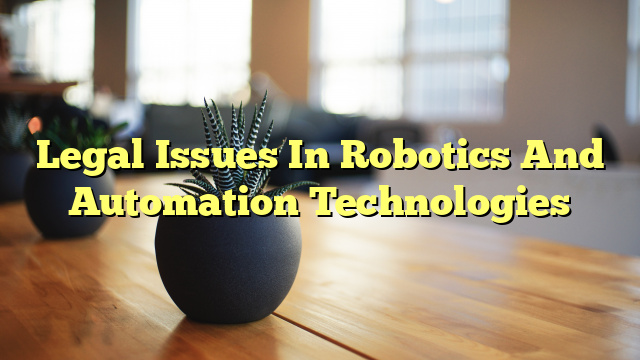Table of Contents
- The 7 Biggest Challenges in Robotics
- Ethical Issues Surrounding Robotics
- Ethical Issues Related to Using Robotic Devices
- The 3 Laws of Robotics
The 7 Biggest Challenges in Robotics
Robotics is a rapidly growing field with incredible potential to revolutionize many industries and aspects of life. However, there are several challenges that need to be addressed in order to make robotics more accessible and safe for widespread use. The 7 biggest challenges in robotics are:
- Cost: Currently, robots are expensive, and they require significant investments to buy and maintain. This makes them inaccessible to many people and industries.
- Reliability: Robots need to be reliable and function properly in order to be useful. This requires significant design and programming effort.
- Safety: Robots need to be safe and not harm people or property. This is especially true when robots are used in close proximity to people or in delicate environments.
- Usability: Robots need to be easy to use and understand. This requires intuitive user interfaces and robust programming.
- Scalability: Robots need to be able to scale up and down depending on the needs of the user. This requires sophisticated software and hardware.
- Legal Issues: There are legal issues to consider when deploying robots, especially when they are used in a commercial setting.
- Ethics: As robots become more integrated into our lives, ethical considerations need to be taken into account.
Ethical Issues Surrounding Robotics
Robotics is a quickly evolving technology with far-reaching implications for many aspects of our lives. As robots become increasingly present in our lives, ethical considerations need to be taken into account.
There are several ethical issues associated with robotics. For example, robots are often designed to mimic human behavior, which raises ethical questions about the use of robots in a variety of contexts. Additionally, robots are often used to replace human labor, which can have a negative effect on workers and job markets. Finally, robots can be used for surveillance and other activities that raise important privacy concerns.
Ethical Issues Related to Using Robotic Devices
When using robotic devices, there are several ethical issues to consider. For example, robots can be used to manipulate people and objects in ways that could cause harm. Additionally, robots can be used for surveillance, which raises important privacy concerns. Finally, robots can be used to replace human labor, which can have a negative effect on workers and job markets.
The 3 Laws of Robotics
The 3 Laws of Robotics are a set of rules proposed by science fiction author Isaac Asimov in his 1942 short story “Runaround”. They were designed to ensure that robots do not harm humans or themselves. The 3 Laws are:
- A robot may not injure a human being or, through inaction, allow a human being to come to harm.
- A robot must obey orders given it by human beings, except where such orders would conflict with the First Law.
- A robot must protect its own existence as long as such protection does not conflict with the First or Second Law.
The 3 Laws of Robotics are not real laws, as they are not legally enforceable. They are instead a thought experiment that raises important ethical questions about how robots should be designed and used.

